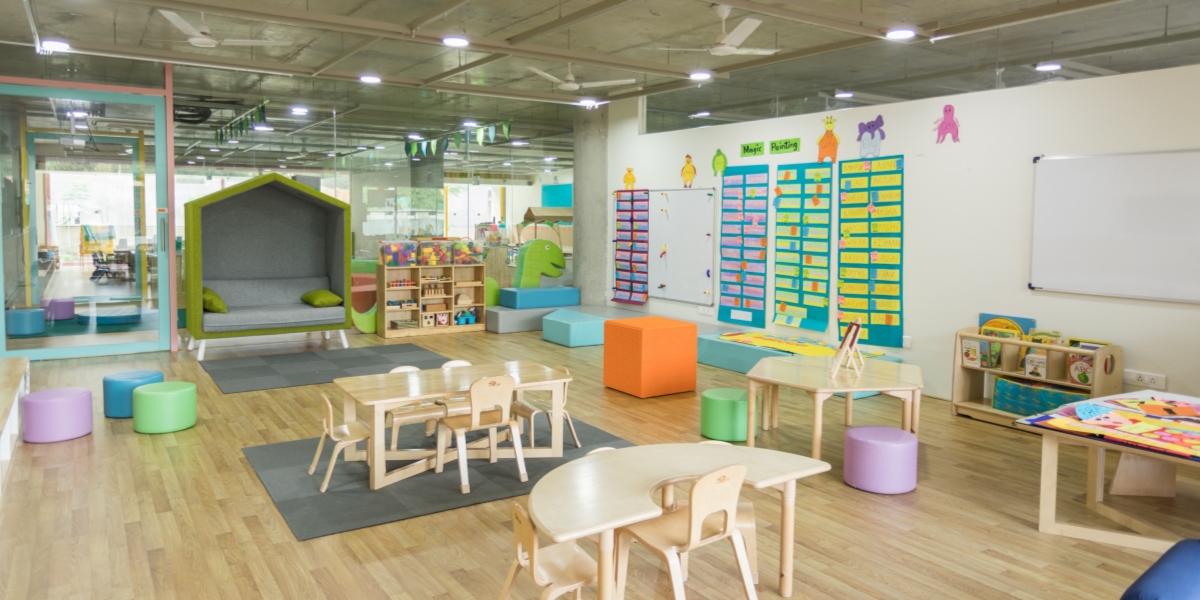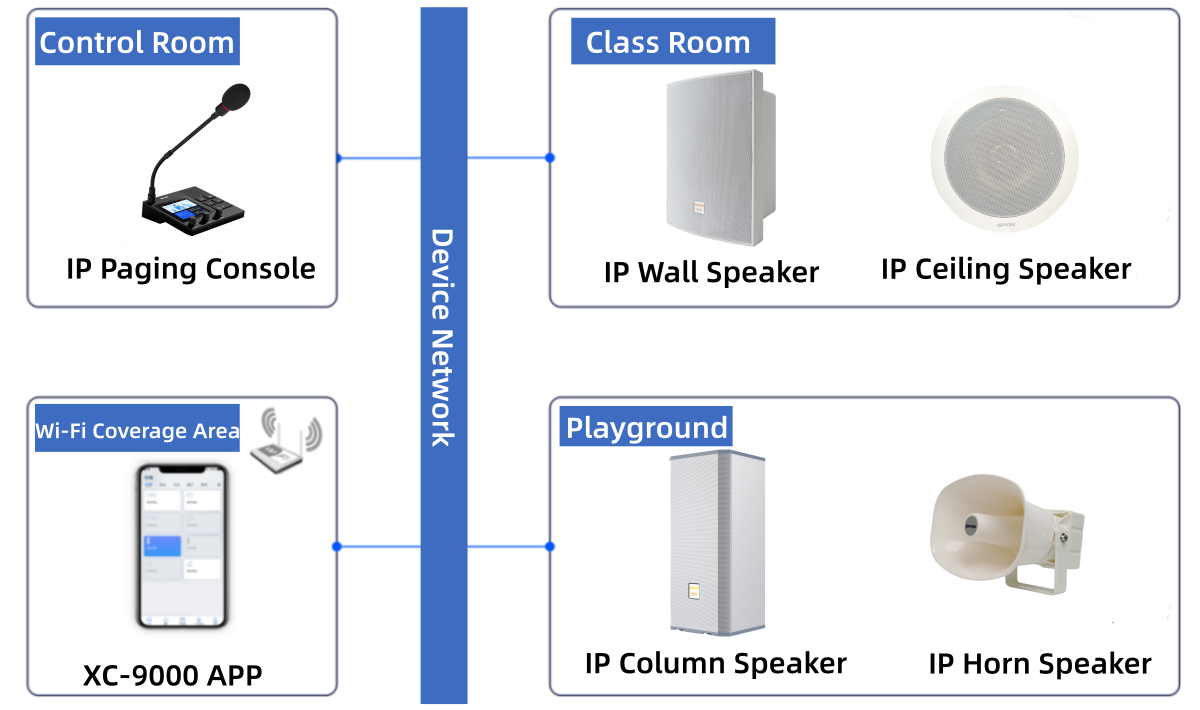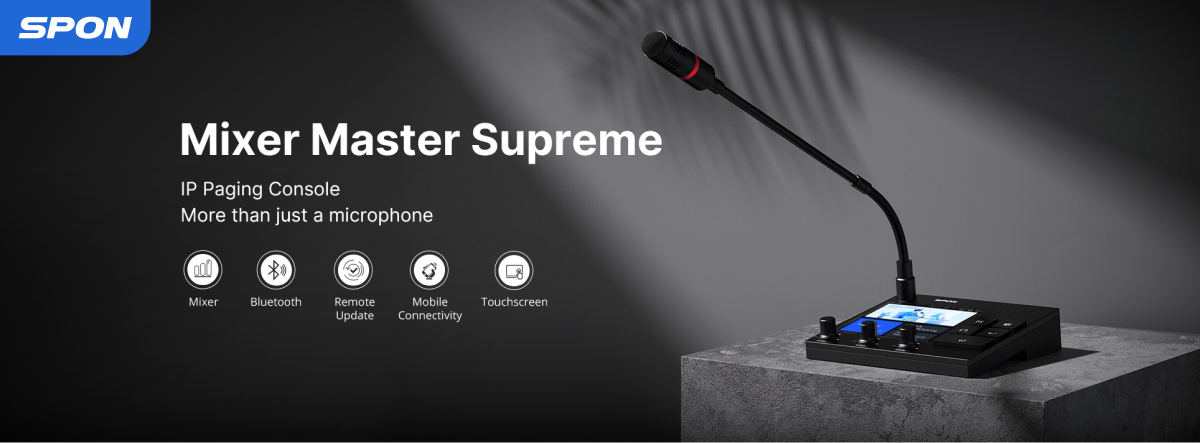Kindergarten marks a crucial starting point in a child's growth, fostering social, cognitive, and emotional skills. In a nurturing environment, it promotes independence, laying the foundation for a smooth transition to elementary school—a key to holistic development.

Needs Analysis
In today's rapidly advancing IT landscape, music plays a vital role in kindergarten education. The integration of intelligent background music and public address systems is becoming increasingly essential. These systems contribute significantly to various aspects of kindergarten teaching.
1. Morning Welcome
Automatically play children's songs, music, welcome messages, and greetings during morning arrivals, setting a positive tone for learning.
2. Class Transitions:
Use lively music as bell signals during class transitions, creating a fun and organized environment.
3. Group Activities
Play specified music or broadcasts during collective activities, enhancing the atmosphere as per teachers' requirements.
4. Nap Time
Gentle music accompanies each child's nap, ensuring a peaceful sleep. Wake up children with music after nap time.
5. Emergency Broadcasting
Instantly broadcast announcements, principal speeches, and commendations to all classrooms during emergencies or special announcements.
6. Afternoon Dismissal
Automatically play cheerful children's music to bid farewell to students, providing reminders and instructions.
System Design
In order to create a comfortable learning environment for children, the IP PA system is specifically designed for different kindergartens. It selects suitable product solutions based on the campus requirements and chooses appropriate speakers, ensuring an adequate quantity, and meeting the desired music quality.
Broadcasting Zones

1.The entire campus is designed as a central zone, facilitating uniform broadcasts across the kindergarten.
2.Segmentation is done based on teaching and living areas, establishing distinct broadcasting zones. These may include classrooms, nap rooms, offices, playgrounds, etc., catering to personalized management needs.
Control Center:
Install an IP paging microphone in the control center, functioning as a broadcasting microphone and housing a microserver for terminal device management. Supports up to 30 terminal devices.

Design and Display
4-inch digital true color capacitive screen with 480×480 resolution.
Unified Paging and Communication Capabilities:
Effortlessly make live announcements to all zones or specific IP endpoints. With a powerful 3W loudspeaker and unidirectional condenser microphone, enjoy clear two-way intercom. The built-in digital processor ensures superior noise reduction for optimal audio clarity.
Efficient Mixing and Web Management
Experience seamless control with an integrated mixing console handling 5 audio channels—MIC, AUX1, AUX2, Bluetooth, and USB. Utilize web server functionality to manage up to 30 IP endpoint devices.
App-Controlled Setup and Firmware Upgrades
Easily configure and update using the "Easy Mic" mobile app for paging zones and task scheduling. Benefit from a user-friendly web interface for hassle-free setup and online firmware updates.
Seamless Compatibility and Connectivity
SIP Support: Compatible with major VoIP phone systems such as Cisco, Asterisk, and Yealink.
Emergency Input Connectivity: Relay input facilitates integration with external detection devices, enabling event-triggered notifications.
RJ45 Ethernet Port: Ensures system accessibility across network segments and routers.
System Functions
1. Scheduled Program Playback
Upload daily broadcast audio to the server, create a playback schedule, and the system will automatically broadcast according to the programmed tasks.
2. Selective Paging
Utilize the IP paging microphone to specify all, multiple, or individual terminals for broadcast paging.
3. Fire Alarm Integration
The IP PA system can integrate with the fire alarm system, automatically initiating emergency broadcasts upon fire alarm signal activation, supporting adjacent area alerts, and allowing manual one-touch emergency broadcasts.
4. Zone-based Broadcasting
The IP PA system can designate multiple terminals as different zones, playing specific audio programs or broadcasting announcements to any specified area. Remote volume adjustment is available for each terminal.